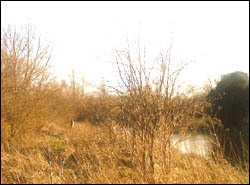The five-acre shoot

Tucked away in the downstream reaches of the Hampshire Avon lies a little jewel of a shoot that can boast a longer history than many more prestigious venues. The Hallett?s shoot has been in the same family for four generations, ever since the great-grandfather of the present shooting tenant first rented the rights on the ground in the 1920s.
In the early days, the shoot extended to nearly 300 acres, but land-use changes from arable
to grazing, the sale of land for death duties, the establishment of a travellers? camp and encroachment from a nearby village saw the area available for shooting steadily diminish. For the past decade the shoot has amounted to barely five acres, but it is a wonderful example of just what can be achieved on a small plot of land.
The shoot consists of one lowland wet pasture field bordered by a thick wooded hedge on two sides, with a reed-filled ditch and a reed-fringed carrier of the river Avon on the others. A small footbridge over the carrier leads to the ?island?, an area of thick sedge and willowherb scrub, with alder, willow and a few conifers fringing the carrier channels and the main river. With such a variety of micro-habitats, it?s hardly surprising this small shoot holds a great variety of wildlife.
Wait among the ditch-side reeds for stubble-fed mallard returning to the river on a warm October evening and watch at least four species of bat hunt the hedgerows and watercourses, while barn owls quarter the meadow like giant, silent moths. Sit at a riverside peg in the cold January twilight and be entertained by a fly-past of little egrets, while kingfishers pipe two-note calls as they patrol the waterway and dabchicks skitter the surface, before plunging into the river. Even in the depths of winter, sedge warblers berate you with their machine-gun song.
Tony Hallett is the present tenant and shoot captain. In January, he appeals for any dead or dying Christmas trees, to lay in the hedge bottoms and on the island to provide shelter and cover at ground level. In the spring and summer months, he recruits a band of willing helpers from family and friends to manage the field boundaries and the island, in order to provide both shelter and feeding for gamebirds and wildfowl, building feeders, cutting pathways and repairing the small seats at each of the shooting pegs. To supplement a healthy wild stock of pheasants, a crate or two of ex-laying birds are released in mid-June and feeders regularly replenished in order to hold them. The fox population is closely monitored and controlled, and carrion crows remorselessly hunted during the nesting season.
On such a small acreage shooting takes place once every two weeks from October. The Guns meet at 2.30pm or so, depending on light, and there are two phases to each shooting day: the afternoon pheasant shoot and evening duck flight. Guns draw numbers and silently take to their pegs along the ditch or on the riverbank of the island; then, for the first drive, dogs are set to work the copse and thick hedges. Sometimes only one or two birds are flushed, but on other occasions 20 or more scatter in all directions, presenting the Guns with fast-climbing and challenging birds.
Next comes the ?island walk?, when all the rough cover and water margins on the island are searched by two walking Guns (invariably Tony and son Paul) and their dogs. Birds break across the river, where quick snap-shooting is needed, or back over the field, where the standing Guns see them coming from a long way off.
Then it is time to relax for a while, change cartridges and settle down for the duck flight. As with any inland wildfowl shooting, so much depends on the recent weather and conditions on the day. After a spell of wet weather the meadow begins to ?splash up? and attracts a variety of species teal and mallard especially, but the bag in recent seasons has also included gadwall, wigeon, pintail and Canada geese, as well as the odd snipe and woodcock. In a dry winter, teal will drop in to the carriers; often the only warning you get is the light splashing as they land, followed by a flurry of wings as they rapidly disappear into the gloaming. Mallard will generally give you more warning, the drake?s creaking quack heard as they curve in to splash-down near the waterside pheasant feeders.
The bag at the end of the day may reach double figures and include as many as five or six different species. It isn?t a big-bag shoot, but true countrysportsmen do not measure their enjoyment by this yardstick. The efforts the Hallett family and friends put in throughout the year certainly pay dividends, not only for the shooting, but also for the wide variety of wildlife that has made a home of these five acres. I feel sure there are few other five-acre shoots that can boast such a long history and continuity of our sporting traditions and few of any size that can deliver such fine sport.








